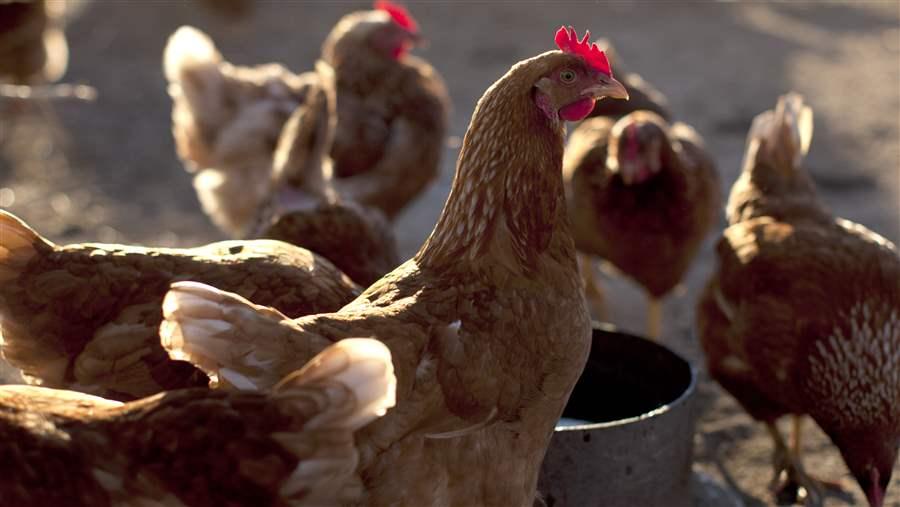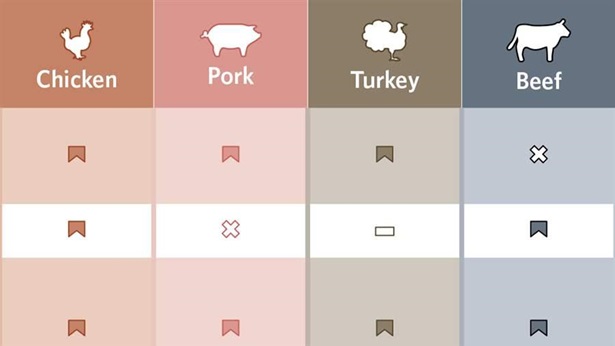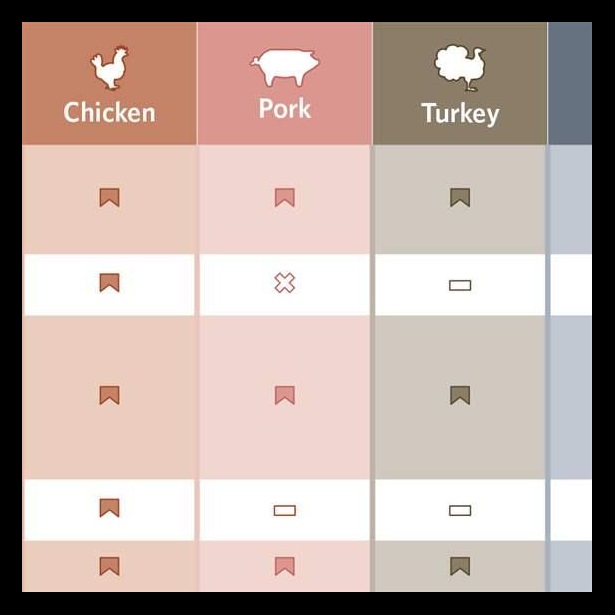What Is Responsible Antibiotic Use—and Why Does It Matter?
Three core criteria are needed to restrict inappropriate use of these lifesaving drugs

With antibiotic resistance on the rise worldwide, there is a global effort to address it by reducing the use of antibiotics in food animal production.
© The Pew Charitable Trusts
It’s easy for consumers to be confused by the labels and logos food companies use to describe antibiotic use in the production of food animals. Phrases such as “no antibiotics ever,” “raised without antibiotics,” and “no medically important antibiotics” can be difficult to understand without standardized terminology.
With antibiotic resistance on the rise worldwide, there is a global effort to address it by reducing the use of antibiotics in food animal production. The more these drugs are used—in agriculture or in health care—the less effective they become. That’s why so many retail and restaurant companies are looking to source meat and poultry from producers that have adopted antibiotic policies that protect public health.
On its face, the idea behind the “no antibiotics ever” (NAE) and “raised without antibiotics” labels seems simple: Meat and poultry in those packages comes from animals raised without the use of these drugs. NAE is one of several ways to reduce antibiotic use. However, transitioning from conventional livestock production to NAE can take years, requiring continuous refinement of management practices as well as major investments, such as modifications to animal housing. Even once NAE policies are established, day-to-day operations can be challenging for producers. For example, when animals do get sick and require treatment with antibiotics, meat from those animals no longer qualifies as NAE and must be sold under another label.
An alternate path is the “responsible antibiotic use” approach, with producers following strict, established criteria to use antibiotics rarely, and only when medically necessary. This approach allows producers to market all of their livestock—including animals treated appropriately for illness—under a responsible use label, indicating that their practices both protect animal health and address the issue of antibiotic resistance.
Responsible antibiotic use centers around three key principles:
- Medically necessary antibiotic treatments. A responsible use approach recognizes that animals occasionally get sick and may require antibiotic treatment.
- Strict criteria and veterinary oversight. To ensure that antibiotics important to both humans and animals are used only when medically necessary; responsible use requires that antibiotic treatment is rare, nonroutine, carefully recorded, and occurs only under veterinary oversight. Veterinarians assume a central role in managing animal health, including finding nonantibiotic alternatives where possible.
- Third-party verification. Regular third-party verification through on-farm audits by the U.S. Department of Agriculture ensures transparency and accountability for customers and consumers.
This approach has already been proved. Pew’s antibiotic resistance project collaborated with School Food Focus (SFF) to develop the Certified Responsible Antibiotic Use (CRAU) standard—the first and, so far, the only responsible use policy of its kind (now managed solely by SFF). Currently, CRAU is exclusively available for chicken sold to institutional purchasers, such as schools and hospitals. However, the concept of responsible antibiotic use can be applied in other settings, including retail outlets and restaurants, and can extend to other species and types of meat, such as pork and turkey.
Pew strongly supports the responsible antibiotic use approach as an important tool in improving stewardship of these lifesaving drugs. Responsible use principles allow consumers to make a meaningful difference in how antibiotics are used and also help meet producer need. We urge food companies and other stakeholders to consider this approach when contemplating changes to meat and poultry procurement policies.
Karin Hoelzer, a veterinarian by training, works on The Pew Charitable Trusts’ safe food and antibiotic resistance projects.













